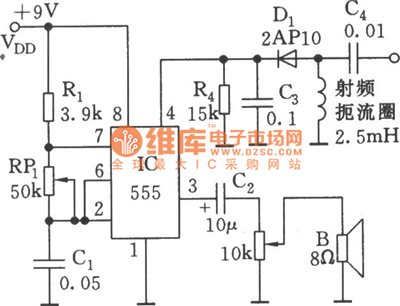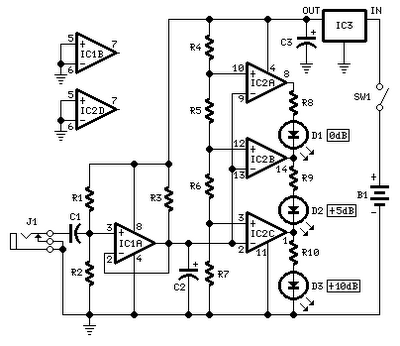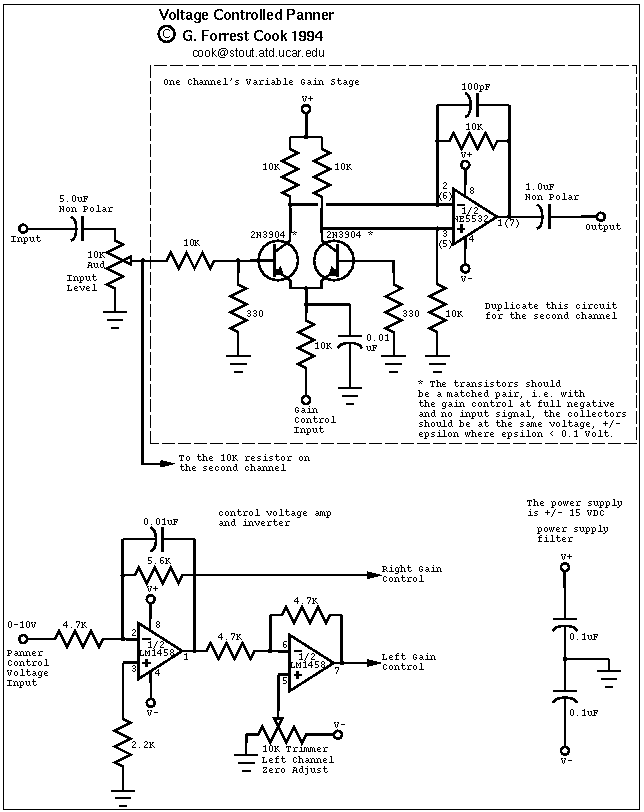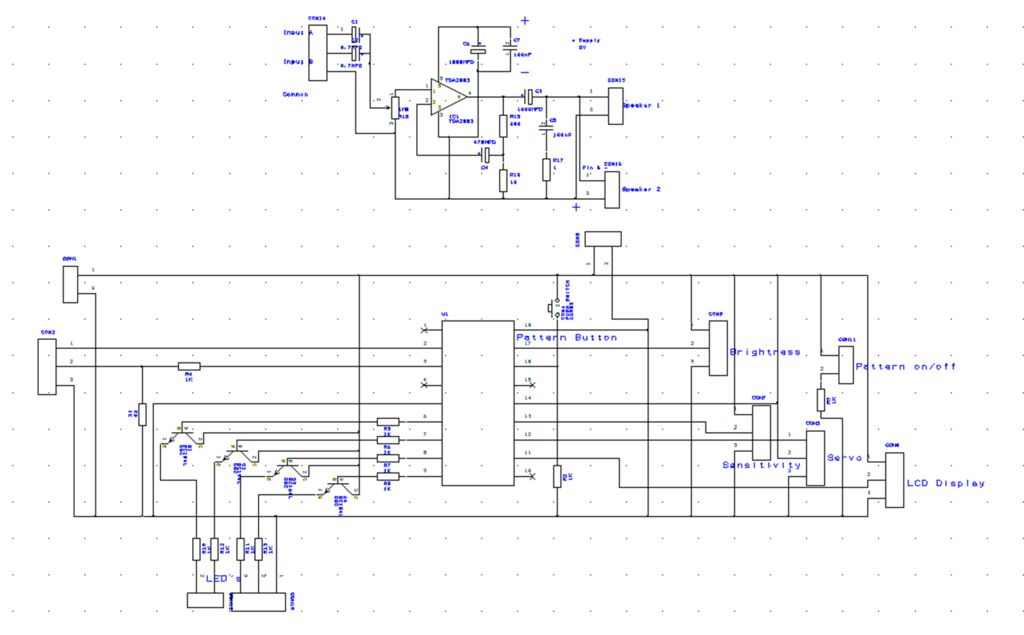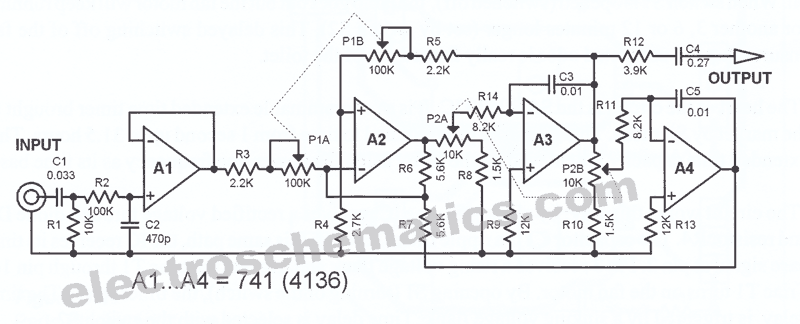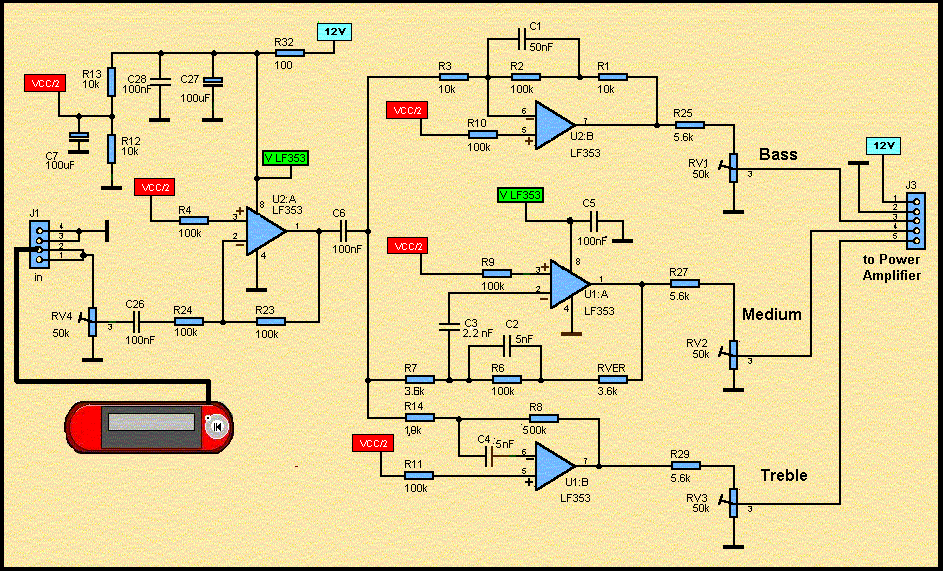
Audio preamplifier circuits
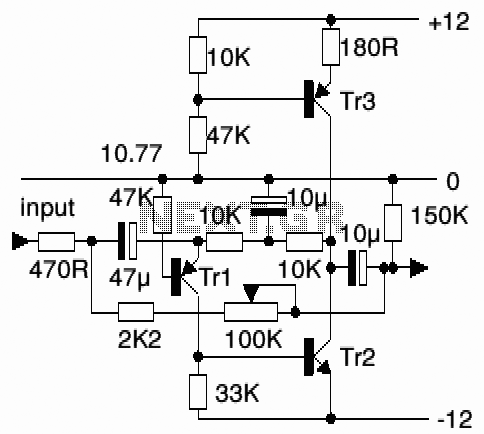
Electronics Circuits Reference Archive Audio preamplifier circuits. There are thousands of preamplifier circuits. Here are three that are somewhat different and have garnered interest. Intercom preamp: A very convenient way of making an intercom system.
Audio preamplifiers are essential components in audio signal processing, serving to amplify low-level audio signals before they are fed into power amplifiers or other processing equipment. The following details outline three unique preamplifier circuits, with a particular focus on the intercom preamp.
The intercom preamp circuit is designed to enhance audio signals transmitted between intercom units. It typically consists of a low-noise operational amplifier (op-amp) configured in a non-inverting configuration to ensure minimal signal distortion and high input impedance. This configuration allows the circuit to accept signals from various audio sources, such as microphones or audio playback devices.
Key components of an intercom preamp may include resistors for setting the gain, capacitors for coupling and decoupling signals, and possibly a power supply circuit to ensure stable operation. The gain of the preamp can be adjusted by varying the feedback resistor values, allowing customization based on the specific requirements of the intercom system.
Additionally, the circuit may incorporate filtering stages to eliminate unwanted noise and enhance signal clarity, ensuring that the audio output is clear and intelligible. Proper grounding and layout considerations are crucial in minimizing electromagnetic interference, which can degrade audio quality.
In summary, the intercom preamp circuit exemplifies a practical application of audio preamplification, showcasing the importance of circuit design in achieving high-quality audio signal transmission in intercom systems.Electronics Circuits Reference Archive Audio preamplifier circuits There are thousands of pre-amplifier circuits. These are three which have interested me and are a little different. Intercom preamp A very convenient way of making an interc.. 🔗 External reference
Audio preamplifiers are essential components in audio signal processing, serving to amplify low-level audio signals before they are fed into power amplifiers or other processing equipment. The following details outline three unique preamplifier circuits, with a particular focus on the intercom preamp.
The intercom preamp circuit is designed to enhance audio signals transmitted between intercom units. It typically consists of a low-noise operational amplifier (op-amp) configured in a non-inverting configuration to ensure minimal signal distortion and high input impedance. This configuration allows the circuit to accept signals from various audio sources, such as microphones or audio playback devices.
Key components of an intercom preamp may include resistors for setting the gain, capacitors for coupling and decoupling signals, and possibly a power supply circuit to ensure stable operation. The gain of the preamp can be adjusted by varying the feedback resistor values, allowing customization based on the specific requirements of the intercom system.
Additionally, the circuit may incorporate filtering stages to eliminate unwanted noise and enhance signal clarity, ensuring that the audio output is clear and intelligible. Proper grounding and layout considerations are crucial in minimizing electromagnetic interference, which can degrade audio quality.
In summary, the intercom preamp circuit exemplifies a practical application of audio preamplification, showcasing the importance of circuit design in achieving high-quality audio signal transmission in intercom systems.Electronics Circuits Reference Archive Audio preamplifier circuits There are thousands of pre-amplifier circuits. These are three which have interested me and are a little different. Intercom preamp A very convenient way of making an interc.. 🔗 External reference
Warning: include(partials/cookie-banner.php): Failed to open stream: Permission denied in /var/www/html/nextgr/view-circuit.php on line 713
Warning: include(): Failed opening 'partials/cookie-banner.php' for inclusion (include_path='.:/usr/share/php') in /var/www/html/nextgr/view-circuit.php on line 713
